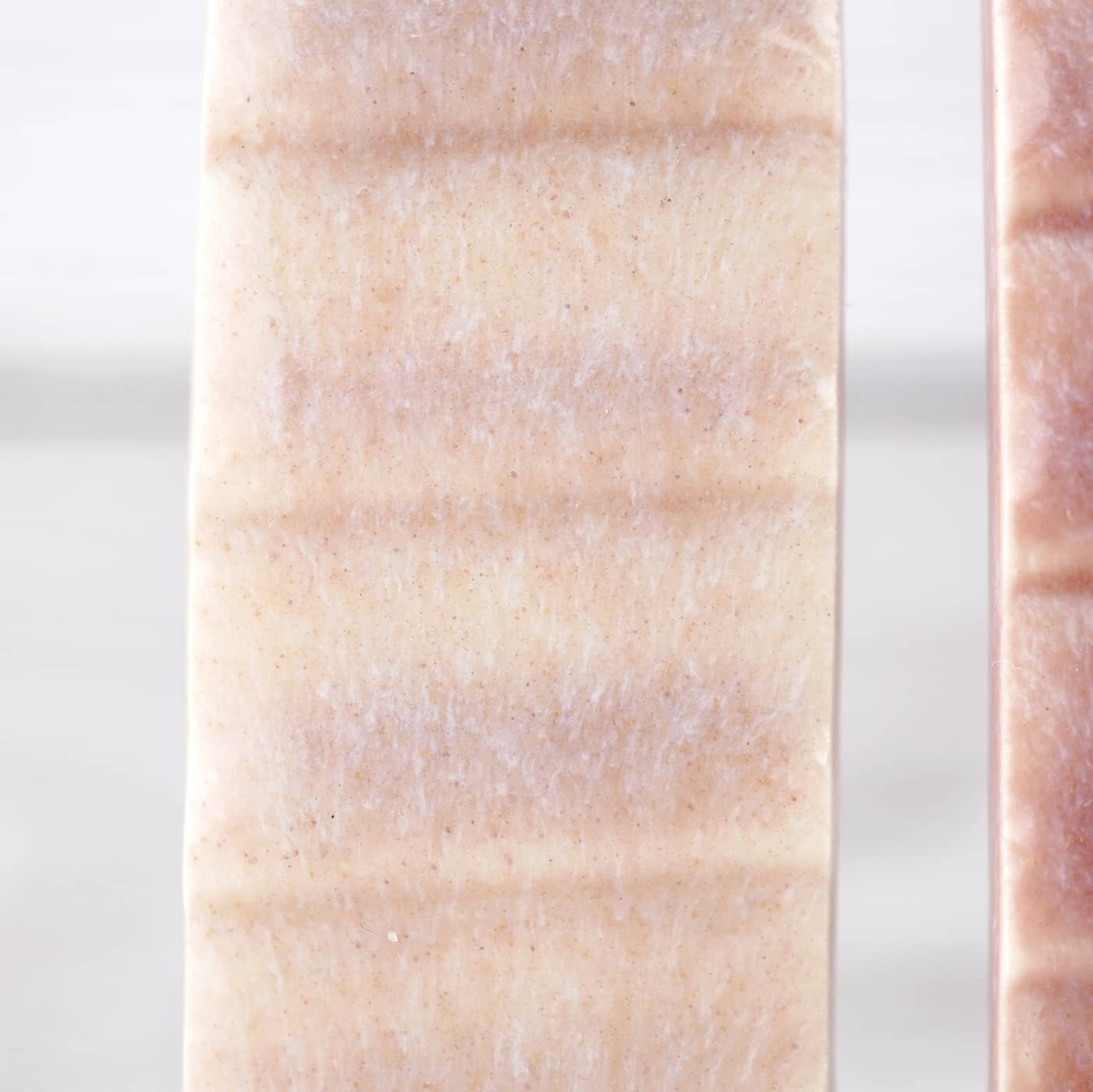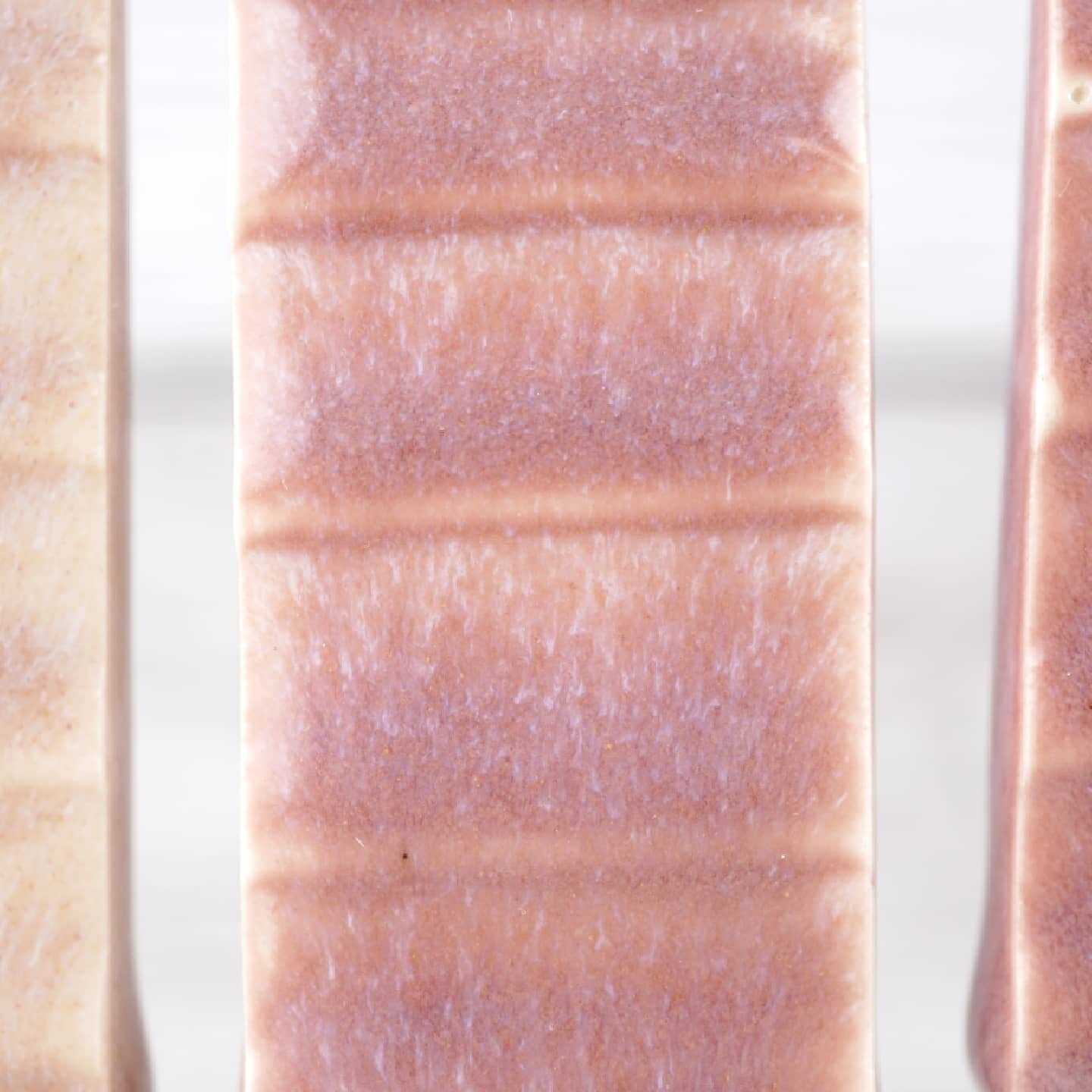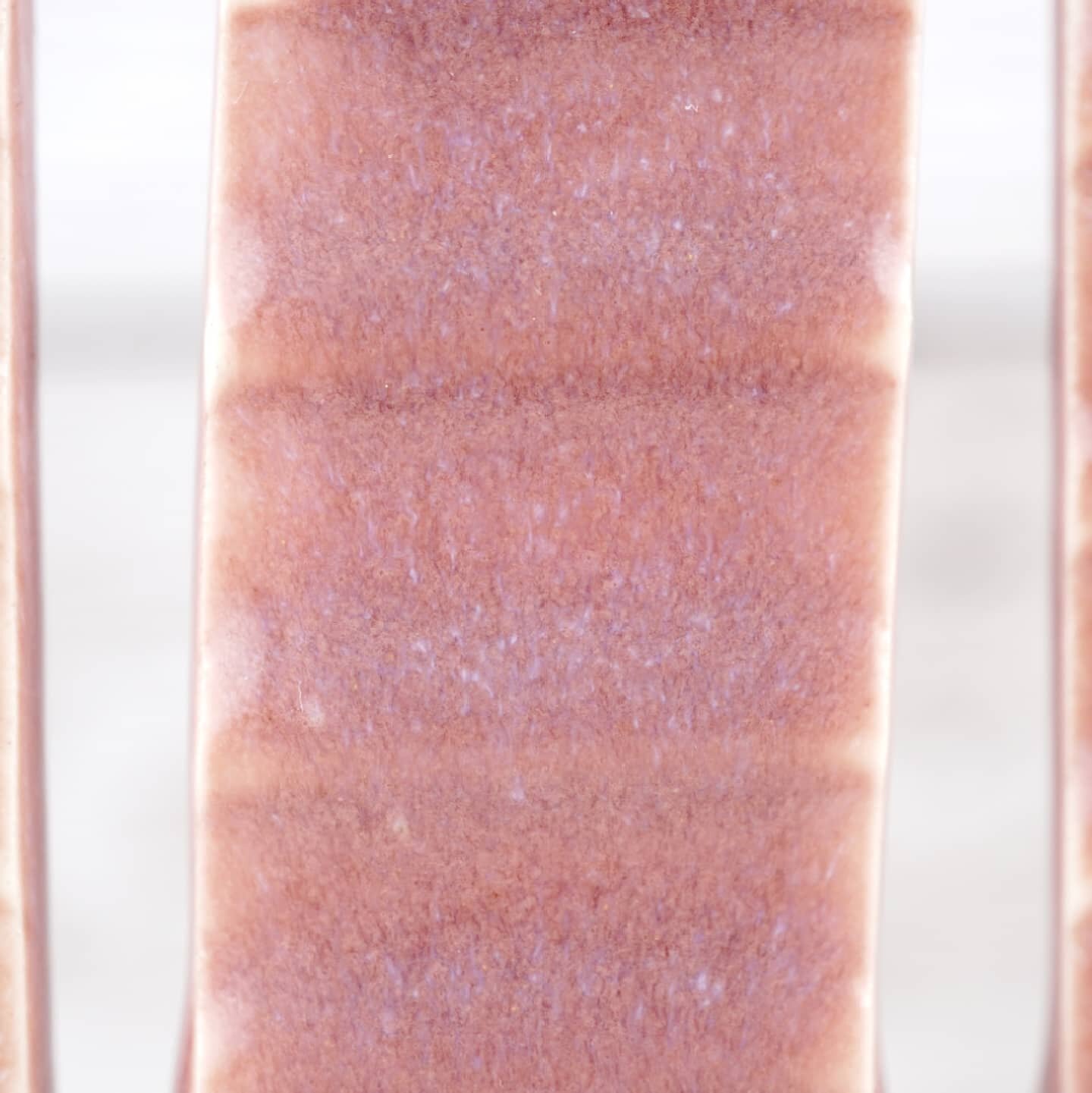The Importance of Mixing Consistently
You might think that the most important thing for consistency when making glazes is how precise you are in measuring ingredients, but for some of those ingredients that might not be the case!
These test tiles are the same glaze (literally the same container), the same application, and in the same place in the kiln for the same firing. The difference is how they were mixed.
The glaze is my new FirstFive Floating Base (with 2.5% titanium) with 1% tin and a tiny amount of chrome.
The first tile is mixed up and passed through an 80 mesh sieve.
The second is that same batch, then blended on the lowest setting on my adjustable immersion blender.
The third is it then blended at the maximum speed on that blender and the fourth is my older 15k RPM immersion blender (no real difference between these).



As you can see here, the difference between sieved and pureed is pretty drastic. The titanium and tin start off fairly clumped, and the more they break up the greater their visual effect on the glaze.
I was expecting a difference, but this really made me realise how much tin I've wasted over the years!
If you use a blender for glaze tests, you probably need to use one for full mixes too, or they won't behave the same way. You could go from tile 3 in tests to tile 1 on your production run and not know why.
You can watch the full process here:







